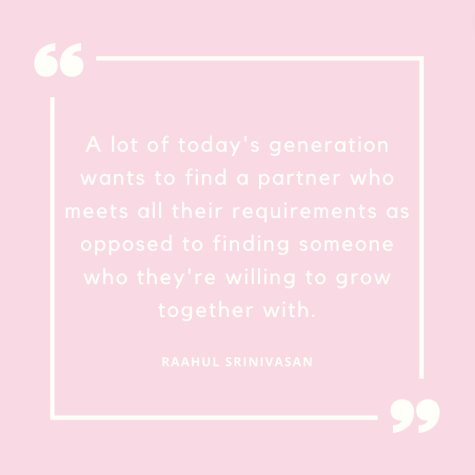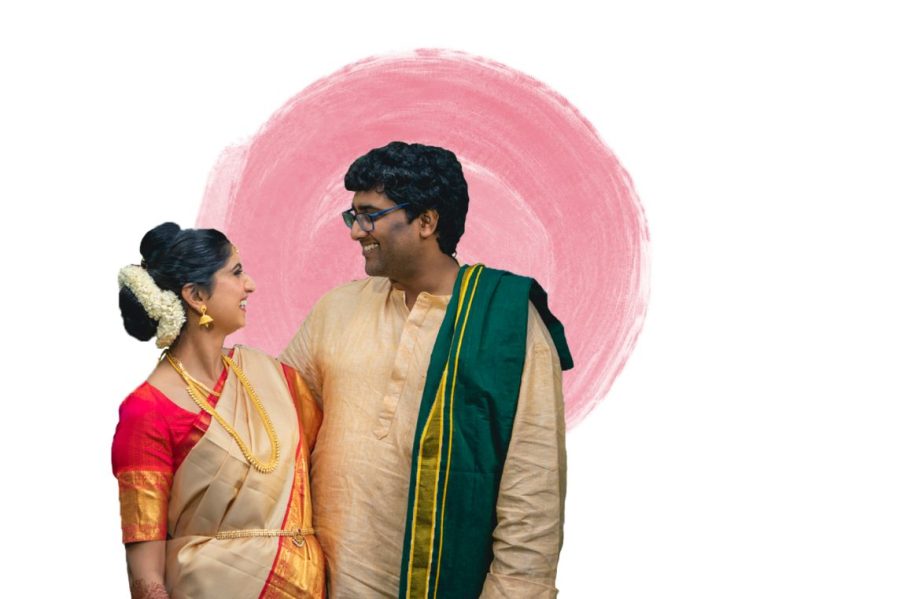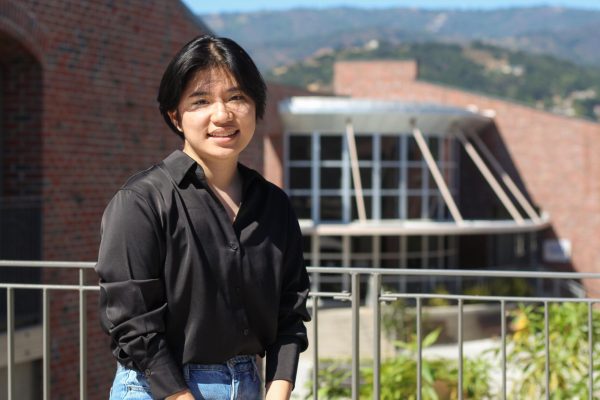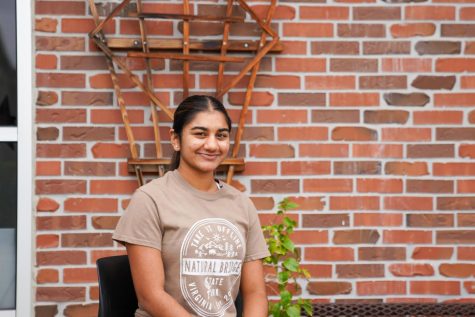The Art of Matchmaking
Examining how the perception of arranged marriage has shifted from the past to present
December 21, 2022
Arranged marriages, a term that invokes the image of child brides and dowries, may seem to be a foreign concept in the modern world. Yet, as with everything else, it has evolved to fit today’s society and is much more nuanced than it is often afforded.
The notion of arranged marriage is one that stretches back to the fourth century and is traditionally defined as a predetermined marriage by parents or a third party. Though most prevalent in east-Asian cultures, arranged marriages were typically seen as a way to maintain the position of upper caste families. Parents would write up what was essentially a resumé and matchmake for their children.
Parent Sreelekha Manoj says she had a typical, traditional arranged marriage. Originally from Kerala, Manoj’s husband’s family visited their home to see her, and after a brief 15-minute conversation, both families decided to continue with the process. After getting engaged a week later, the couple conversed through the mail for six months before getting married on May 4, 1997.

However, Manoj criticizes the process for giving little freedom to women. According to Manoj, in South India, families pressure children to get married before 25, and finding jobs and obtaining an education are tasks to be done later on. Even if they don’t want to get married, women often can’t say anything.
“We didn’t have that much courage to [say], ‘Oh, I don’t want marriage right now,’” Manoj said. “The culture and society pressure you to keep quiet because that’s how custom works.
Manoj especially disliked the dowry system prominent during the time, one that continues today. A dowry is a monetary gift given from the bride’s side to the groom’s family. Manoj says that she was against having to give a dowry to the groom’s side, especially since in typical South Indian culture, the bride’s side funds all wedding processions.
However, as society continues to modernize, there’s been changes in how arranged marriages are perceived, especially within a more liberal Bay Area. Most people’s perceptions remain negative. For example, freshman Suhana Pathak’s aversion to arranged marriages comes largely from her parents’ negative experience with their own arranged marriage.
“I don’t like [arranged marriages],” Pathak said. “I think they end pretty terribly for most people involved. Especially if you marry someone who’s a little cuckoo, and you just don’t know before.”
On the other hand, there have been many success stories within arranged marriages as well. Rahul Srinivasan and his wife Sumita Sami met through an arranged meeting by their parents three years ago and are now happily married with children. Srinivasan says his father dubbed their marriage an “assisted marriage” — although their initial meeting was organized by their parents, the choice of whether or not to date and eventually marry was ultimately left up to the two of them.
Srinivasan and Sami’s story reflects the new direction in which arranged marriages have started to move, one where there’s a facilitated first meeting, but the participants ultimately have control over their decision. Pathak also says this more modern version is more acceptable to her and may in some cases be even better than traditional dating, especially for those who don’t wish to go through the effort of dating.

Srinivasan and Sami point out that although arranged marriages may not be perfect, traditional dating is not without flaws, saying that both have pros and cons, and it all depends on the individual’s preferences — for arranged marriages, just because a meeting has been prearranged doesn’t mean there’s no love or compatibility between the two. Srinivasan emphasizes the idea of putting in an active effort to get to know a person rather than just waiting for the “right one.”
“I think a lot of today’s generation wants to find a partner who meets all their requirements and because they’re getting married later in life, have more requirements, as opposed to finding someone who they’re willing to grow together with,” Srinivasan said.
He compares it to his experience with being vegetarian: in college, people would constantly ask him whether he ever missed hamburgers. In response, Srinivasan would ask them whether they ever missed rasam sadam, a classic South Indian dish. The answer to both would inevitably be no because neither person had ever tasted the other dish before — and it’s hard to miss something when it’s “just not in your worldview.”
According to Pathak, it’s important to keep in mind that arranged marriages are deeply rooted in tradition and communities, which are hard to change and speak out against. Pathak says her “entire family going back generations and generations is just arranged marriages,” and the idea of a love marriage seems almost unfathomable to her. Sami also highlights the difficulty of truthfully sharing one’s dislikes on dates, because there’s always the fear of “what will happen if people find out about some part of you that you don’t want them to find out about because it’s a very community-driven process.”
In the end, arranged marriages are still a divisive topic that continues to be debated. For some, like Sami and Srinivasan, it’s a story with a happy ending. For others, like Pathak, the concept feels outdated and unfair in the modern world. Ultimately, to Srinivasan, getting an arranged marriage is an option left open to those who wish to pursue it.
“Yeah, the tradition is there but I think that each generation has the ability to break the tradition,” Pathak said. “It just depends if they’re going to do it or not.”





























